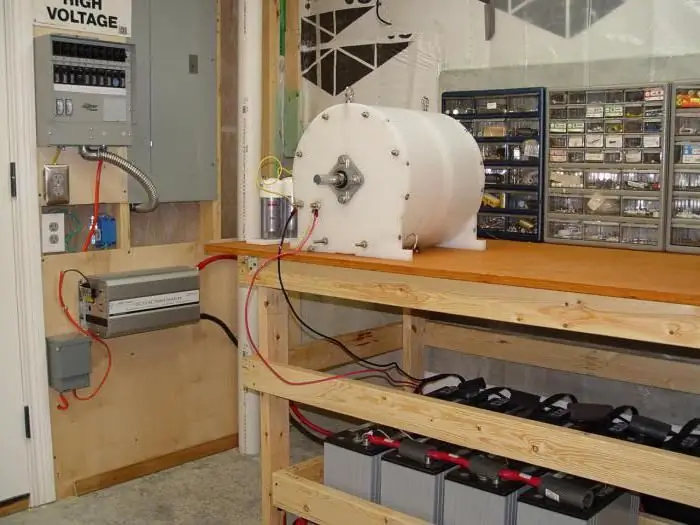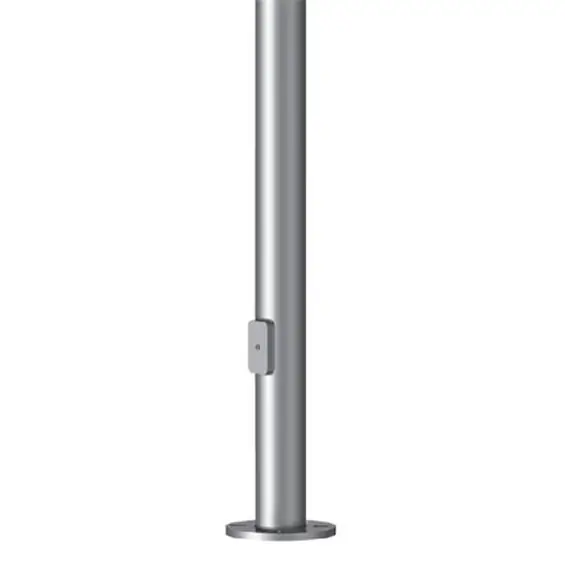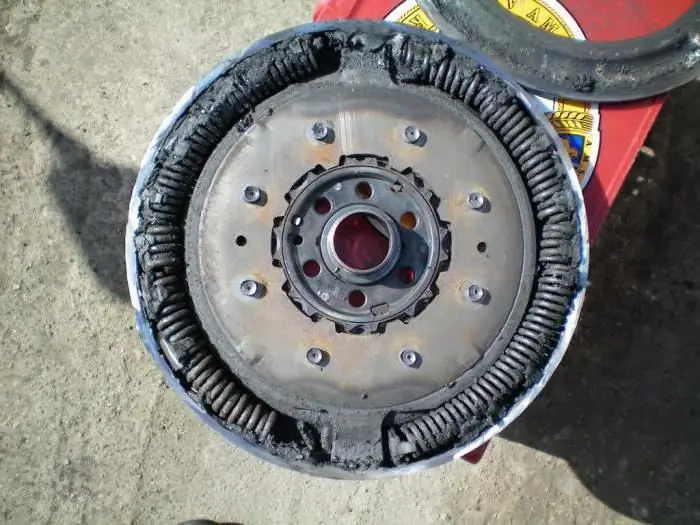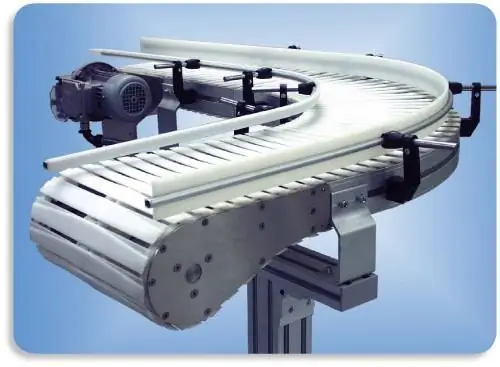2026 Author: Howard Calhoun | [email protected]. Last modified: 2025-01-24 13:10:47
Scraper conveyors have become widespread in the coal industry. They can move the load along a fixed chute with the help of scrapers, which are connected by a movable chain. These conveyors are used to transport pulverized, granular and lumpy goods.

Types of scraper conveyors
There are two types of scraper conveyors, which differ from each other in design and the principle of movement of cargo.
1 type - conveyors with very high scrapers;
2 type - conveyors with submerged scrapers (cargo moves in a solid mass).
The scraper conveyor is used to transport goods that are not subject to crumbling, that is, their quality does not decrease for this reason. These conveyors can be used to move a load with a low strength of the pieces, because if they are strong, they can begin to jam when caught between the chute and the scraper.
Scraper conveyor with large scrapers

Chutes of the scraper conveyor withlarge scrapers are made of steel with a thickness of 3-8 millimeters. To increase the service life of the scraper conveyor, one strip of wear-resistant material (may be high-manganese steel) is soldered to the lower scraper edge. Plastic scrapers are also used. The length of the individual elements is determined depending on the angle of repose, the chain pitch, the size of the pieces of cargo, and also the height. The length of the scrapers we have chosen should best fill the space between a multiple of the chain pitch and the scrapers. But remember that the length should be slightly larger than the largest piece size. The shape of the gutters can be very different.

A scraper conveyor with submerged scrapers should have, with the same performance, much less weight and dimensions than a conveyor with large scrapers. These conveyors have a chute of two parts: one for the idle, the second for the working branch. The load must fill absolutely the entire part of the gutter. Thus, when the chain moves, the load moves along the chute.
Conveyors with submerged scrapers are able to move cargo along vertical, inclined and even horizontal sections of the track. Therefore, they are intended for the movement of small-sized, granular, dusty, as well as light-bulk cargo. Scraper conveyors with ease and without overload can lift the load to a height of up to 20 meters, move it to a distance of up to 100 meters, increase productivity up to 700 t / h.
Benefits of conveyors
Amongof all advantages, special attention can be paid to the excellent filling of the gutter section and the ability to move cargo without overloading on rather difficult routes and turns.
Disadvantages of conveyors
The scraper conveyor has fewer disadvantages than advantages, but, nevertheless, they exist. Conveyors wear troughs and scrapers intensively, and they also consume a lot of energy. You should also pay attention to the fact that this device is difficult to transport sticky, wet and abrasive goods, as they tend to remain between the troughs and scrapers.
Now you know what a scraper conveyor is!
Recommended:
Classification of engines. Types of engines, their purpose, device and principle of operation

Nowadays, most vehicles are powered by an engine. The classification of this device is huge and includes a large number of different types of engines
Electric locomotive 2ES6: history of creation, description with photo, main characteristics, principle of operation, features of operation and repair

Today, communication between different cities, passenger transportation, delivery of goods is carried out in a variety of ways. One of these ways was the railroad. Electric locomotive 2ES6 is one of the types of transport that is currently actively used
Scraper Conveyor: General Description and Benefits

Scraper chain conveyor is a continuous device, which is designed to deliver small bulk materials in large quantities over short distances. The simplicity of design, high efficiency and ease of maintenance of this vehicle make it very popular and indispensable in many industries
Steel support: types, types, characteristics, purpose, installation rules, operation features and applications

Steel poles today are most often used as lighting poles. With their help, they equip the lighting of roads, streets, courtyards of residential buildings, etc. In addition, such structures are often used as supports for power lines
Clutch flywheel: description, types, purpose and principle of operation

Everyone knows that the main task of an engine is to convert energy into torque. Its transmission is carried out through a special flywheel of the clutch disc. This node is available in any car. How is it arranged and functioning? All this and more - further in our article

